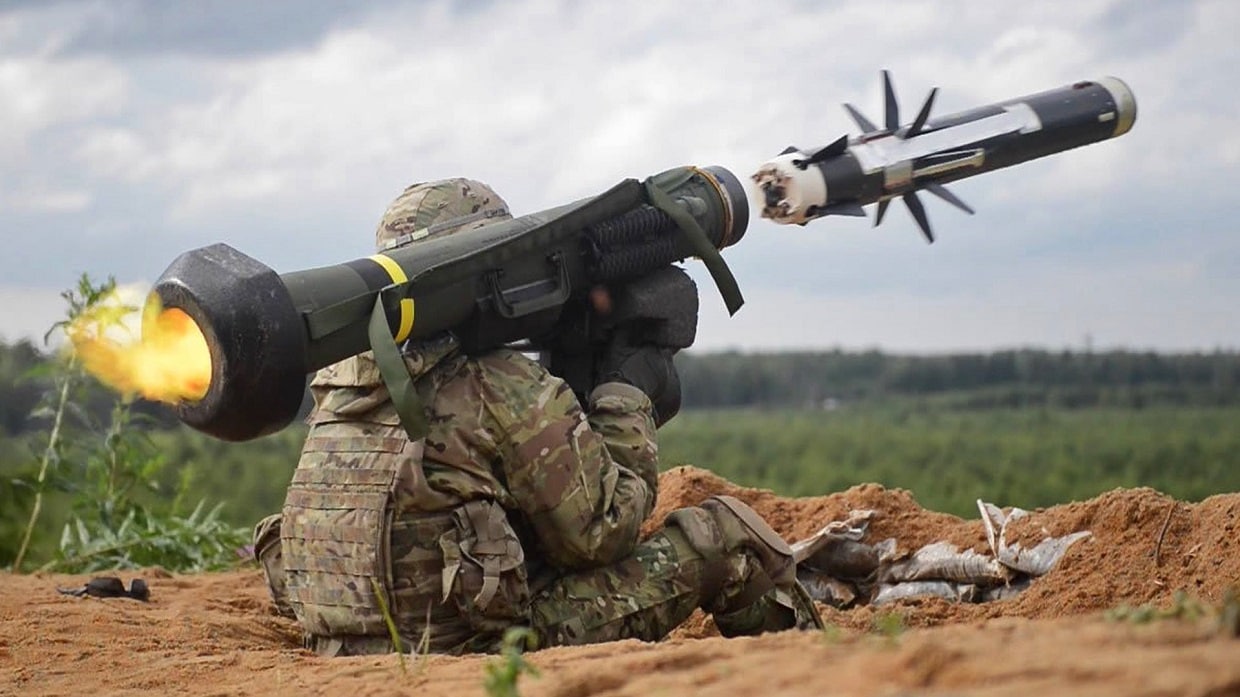Ukraine – World War I Style Trenches, Second World War Small Arms and Foreign Volunteers – Decades from now, when military historians look at photos taken from the war in Ukraine, it might be easy to mistake the scenes with those from past conflicts. Welders and other skilled artisans have been busy replicating Czech hedgehogs, the effective static metal anti-tank barriers, which have been placed to help fortify Ukraine’s urban centers.
The large static obstacles, which are made from steel I-beams, resemble a child’s toy jack – and because it maintains its function even when tipped over, the Czech hedgehogs have proven effective at stopping light to medium tanks and other vehicles from penetrating a line of defense. These were widely employed by the Soviet Union to stop advancing German tanks, and now in a twist of irony could be used to stop Russian tanks in many of these same locations.
Ukraine War: Trenches Manned by Volunteers
Even before Russia launched its unprovoked invasion, Ukrainians had dug massive trench lines that seemed little different from the defensive lines seen across the Western Front of France and Belgium during the First World War. Now, similar trenches are being dug around the capital of Kyiv and they are manned with foreign volunteers from the UK.
In what might seem like a scene out of the Spanish Civil War, tens of thousands of foreigners from across the world have come to help defend Ukraine. Ukraine has announced that upwards of 20,000 foreigners have volunteered to fight the Russian invaders. That has included former members of the British Army’s elite paratrooper regiment, a Canadian sniper and countless others from across the world.
And some of those men are armed with decades-old weapons.
An Old Light Machine Gun Sees New Use in Ukraine
A common sight is volunteer soldiers armed with a light machine gun that became infamous during the Second World War. In the weeks leading up to the invasion, members of the Territorial Defense Forces were training with the Soviet-designed Pulemyot Degtyaryova Pekhotny (Degtyaryov’s infantry machine gun), more commonly known as the DP-27 – even if in the West it has typically been referred to as the DP-28.
Developed by noted Soviet small arms designer Vasily Degtyaryov, the DP-27 light machine gun proved to be reliable, accurate, and, most importantly, durable. As with other Soviet small arms of the era it could be manhandled, used in foul conditions, and still worked like it was new. It could, and did, endure freezing temperatures and continued to lay down fire on enemy positions when other weapons of the time wouldn’t function.
Thanks to its top-loading pan magazine, it earned the nickname “the record player” or “Stalin’s phonograph.” The magazine held forty-seven rounds of 7.62x54mmR ammunition, the same caliber that was used in the Russian/Soviet military’s Mosin Nagant bolt action rifle.
It isn’t clear how many DP-27s the Ukrainian Territorial Defense Forces may have in its arsenal or where the weapons came from. However, nearly 800,000 of the light machine guns were produced in all variants – and they remained in service until the 1960s.
Moreover, the DP-27 hasn’t been the only vintage weapon pressed into service. Videos have also surfaced on social media that suggested that some volunteers have even manned M1910 Russian Maxim heavy machine guns – a weapon first used by Imperial Russia more than 100 years ago! Yet, much like the DP-27, the M1910 Maxim is chambered for the 7.62x54mmR cartridge, a round that is still in service with the Ukrainian Army.
Finally, those weapons may be old, but they were used successfully to stop the German invaders and could be used successfully to counter an invasion from the east by Russia.
Now a Senior Editor for 1945, Peter Suciu is a Michigan-based writer who has contributed to more than four dozen magazines, newspapers and websites. He regularly writes about military hardware, and is the author of several books on military headgear including A Gallery of Military Headdress, which is available on Amazon.com. Peter is also a Contributing Writer for Forbes.

